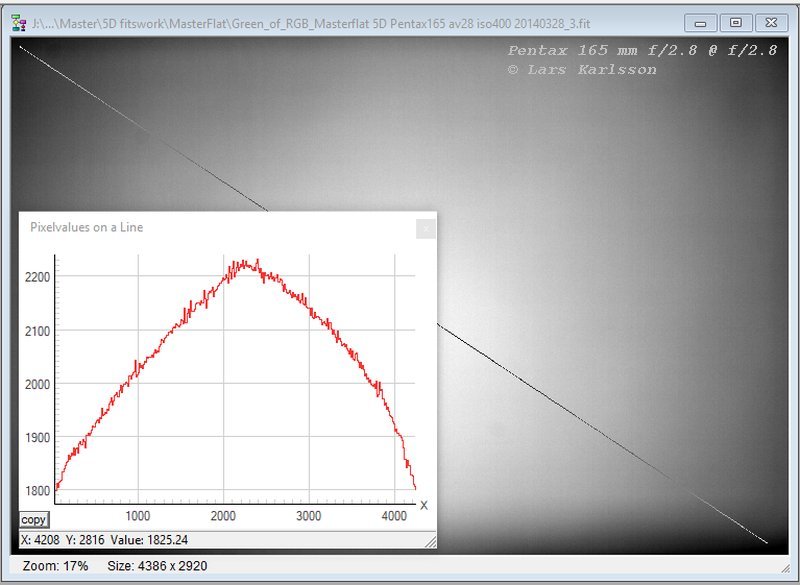|
Advertisement / Annons: |
Project:
|
Content:
Note: |
|
These two images are taken from the first green channel in a master flat. I normally demosaic my color images to RGGB and thereafter handle them as three (four, but the green1 and green2 are aligned against each other) monochrome images. 4. Analyze of Pentax SMC 67 165 mm f/2.8 vignetting
This is from old data I found when I used this lens a couple of years ago. Note the scale of Y-axis, it does not start at zero. A calculation give us 1800/2200 = 0.82 or 82%. That means that the signal at the corner have just lost 18% compare to center, it's nothing. If the Y-axis has started at zero it had look more like a flat line. And this is done at fully open aperture, f/2.8. The "SMC" on the lens stands for Super Multi Coating, it's only the later lenses that have this. It was little strange that when I took new flats I got more vignetting of the new ones. I now know that I must have set the aperture ring to wrong aperture, there is a click stop between each normal stop, and the label on the aperture has only 2.8 and then 5.6, not 4. 
Anther measurement of the vignetting, now at aperture f/4. 1900/2050 = 0.92 or 92%, even better. But there is no need to stop down the aperture to get less vignetting when it's already this low, but for the resolution it could be an advantage. When I stop down the aperture I get this strange dissymmetry, part of the explanation could be that a DSLR camera has a very deep entrance and it's not rotation symmetric, it's rectangular and it block the edge ray. Another problem is the mirror that can cause similar problem. A medium format lens has a very wide light cone. A mirror less camera with a big entrance should perform better with it's shorter back focus. The background above look very uneven but that has to do with that this image is stretched.
|
|